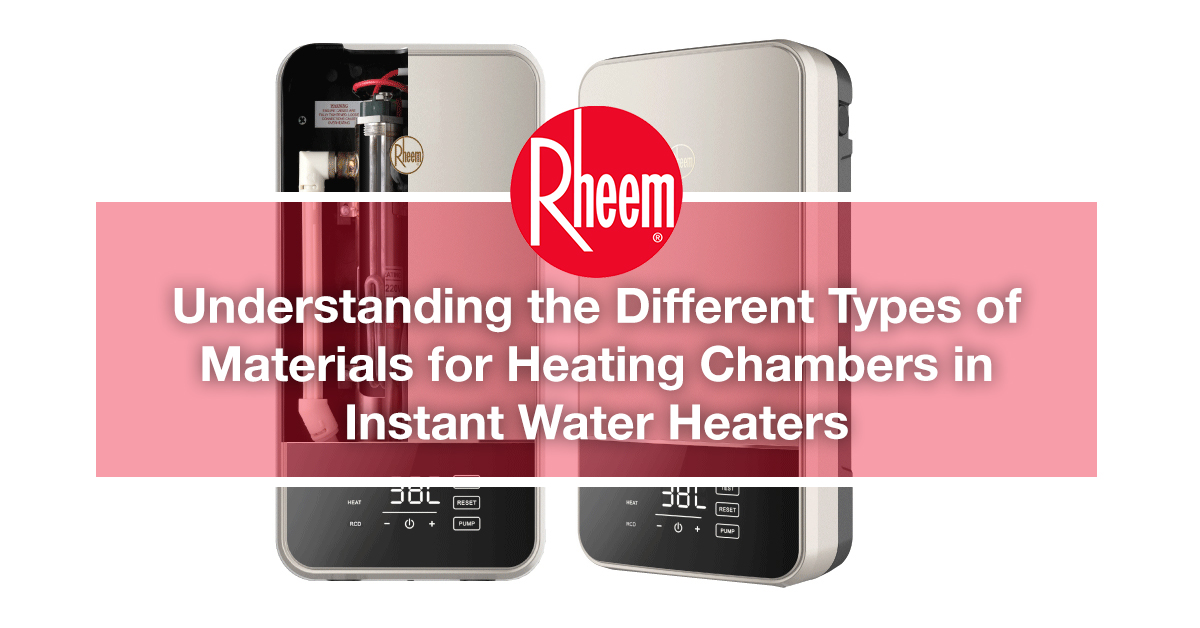
It’s safe to say that the instant water heater market is here to stay, especially so since we’re all after one of life’s little pleasure— a warm shower. As the market grows, brands are coming up with the latest heater designs with different types of materials used. As a homeowner, you’ll want fortifying materials used on your water heater to protect yourself against any mishap. Every single part of the instant water heater, both externally and internally—particularly the heating chamber— has to be well-thought out to ensure maximum safety and durability.
The heating chamber, one of the essential parts of an instant water heater, is where water is heated. As you turn on the faucet for hot water, water starts to flow in through the inlet fitting. The flow sensor will then trigger the heating element in the heating chamber to be heated up. Water will then be heated as it flows through the heating chamber.
Water heaters may look and market themselves similarly, but one of the differences lies in the materials used. In the market, heating chambers in instant water heaters are typically made using either of these three materials: polymer, copper, or stainless steel.
A polymer is an umbrella term that includes plastic, wood, rubber, etc. More than half of the water heater brands in the market use polymer materials for their heating chambers. The cost of this material is comparably lower, which means lower prices and more savings on the customer’s end. However, what you pay for is what you get: this material’s ability to withstand high temperature is relatively weak. When there is a sudden spike in temperature, it may cause your instant water heater to malfunction.
About 1/3 of the water heater brands in the market uses copper for their heating chamber. Although water heaters that use copper for their heating chamber are slightly pricier, you get what you pay for. Copper is a decent conductor of heat, and that shortens the already-quick water heating time even more. However, the downside of using copper for heating chambers is that it may not work well with water with high levels of impurities.
Few water heater brands in the market use stainless steel for their heating chamber, as it usually comes with a premium price tag. But there is still a demand in the market, because stainless steel heating chambers are known to be exceptionally durable, even when used in areas where water have a high level of impurities. Practically functional yet durable, a pricier instant water heater may be more of an upfront investment, but they’ll repay you in years of use.
If you are looking for an instant water heater with stainless steel heating chamber, turn to Rheem’s Prestige range of instant water heaters. Designed using only premium materials such as stainless steel, Rheem’s Prestige range of instant water heaters are built to last while providing you with maximum comfort for your showers. Learn more
Subscribe

At Rheem, we strive to innovate
best-in-class products to lead the industry
in
environmental improvements.
Sustainability

